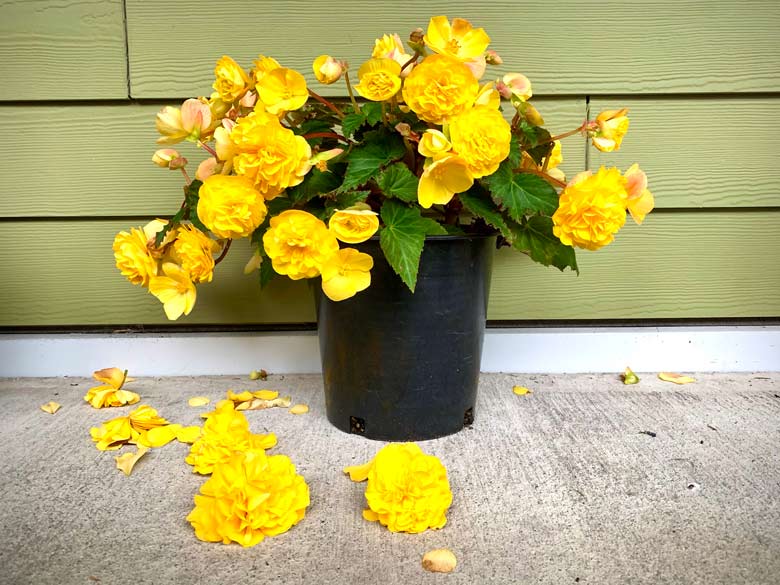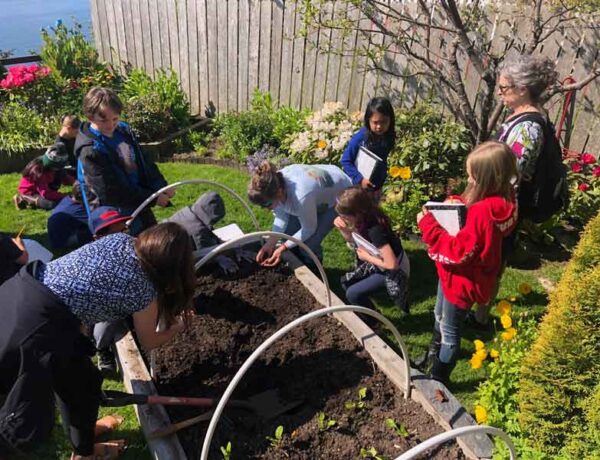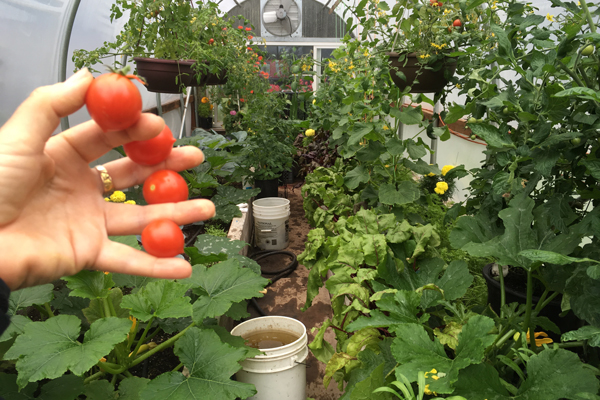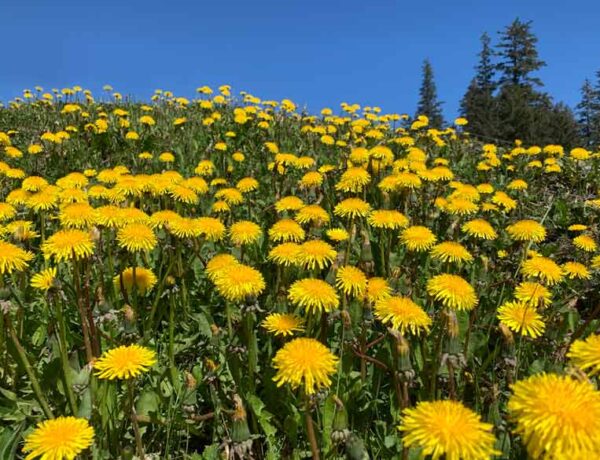Dear readers,
For today’s column, I’d intended to dive into composting and how to harvest and store potatoes. Then my copy of GreenPrints arrived in the mail, and I changed my mind. Oh, yes, I promise to talk about compost and spuds soon. But for today, it’ll be different.
This organic gardening article was originally published in the Kodiak Daily Mirror, the hometown newspaper for Kodiak, Alaska. You can access the archive page for my past columns, written each week since 1986.
What is GreenPrints?
For over 25 years, editor Pat Stone has shared the absolute best true stories of gardeners from all across the country. It’s been called the most inspiring, humorous, and heartfelt gardening magazine of all.
GreenPrints is a garden of talent: Writers, artists, poets. So lovely, this “Weeder’s Digest.”
The cover of the autumn 2020 issue features a watercolor painting of yellow, pink, and red autumn leaves nestled in a blue vase of water. At the bottom of the magazine is the quote:
[perfectpullquote align=”full” bordertop=”false” cite=”” link=”” color=”” class=”” size=””]Autumn is a second spring when every leaf is a flower.[/perfectpullquote]
Pat Stone, by the way, was one of my team members who helped co-author Chicken Soup for the Gardener’s Soul, which bloomed on the New York Times bestseller list for three months. Until September 11, 2001. Then everything ground to a halt.
Just like the past few months did when COVID-19 slammed into our lives
And so what REALLY caught my eye—and my heart—was Pat’s ‘notes from the editor’ that appear inside the front cover of each issue. This time, it was a letter from his brother Rick. Pat had been considering writing a gentle and caring comment about these disturbing times in the autumn issue.
But Big Brother had advice for little Bro…
“Pat, I don’t think you should do that,” he said. “The garden is a retreat, a sanctuary as you say. Much better to talk about that. About how wonderful it is, even in these times of distress and disease, that one can escape to one’s garden, be free from these cares and concerns, and renew oneself in the presence of nature, working with what is so beautiful and fruitful.
“We are so blessed to love gardens,” he continued, “and really, when one thinks about it, every human is blessed with the garden of this Earth, whether they know it or not. Earth is the garden of the universe.”
The French philosopher Voltaire, back in 1769, reminds us that gardening is one of the best things one could do in troubled times.
[perfectpullquote align=”full” bordertop=”false” cite=”” link=”” color=”” class=”” size=””]Life is bristling with thorns, and I know no other remedy than to cultivate one’s garden.[/perfectpullquote]
Tending a garden, said Rick, helps us tend the other parts of our life, our family, our friends, our community, and ourselves.
“So, Pat, for editorial, economic, and exhortative reasons,” said Rick, “I think you should avoid stepping out of the garden, but rather bring people into it.”
How to overwinter a tuberous begonia
If you grow tuberous begonias, no doubt someone has ooo’d and ah’d over such beautiful flowers. They come in many different colors, often thick blossoms of so many petals—which taste like lemon, by the way—you wonder if any more could be shoe-horned in.
Begonias like Kodiak’s cool, moist climate, and thrive in lightly shaded places where the soil is rich and well supplied with humus. Flowering is stimulated by long day lengths, common of course, during Alaska summers.
With fall just over a week away, it’s time to put our begonia bulbs to bed for the winter. Just how to do that is something we’ll cover here…
“It’s pretty easy,” says June Horn. “Allow it to die back naturally, and then put in a cool, dark place. In February, put it in the light, watch for new growth and water lightly.”
Other gardeners prefer to remove the bulb from the pot.
Tami Starr loves growing begonias and tends them with TLC. One bulb, that produces bright flowers that graduate from yellow to red, she has managed to keep for nine years. What’s her trick?
“I wait until the plant dies back, dig it up and carefully dust off as much soil as possible,” Tami says. “I store each tuber individually in a paper sack that I label with the color and overwinter in a cool closet.”
Jane Eisemann emphasizes the best way to remove soil from the tubers. “Clean ‘em up a little, but don’t wash them.”
She also recommends checking on your tubers or plants periodically over the winter. “If they get too dry, mist them now and then.”
Kodiak Garden Calendar
Shrubs and trees: This is a good time to move them. Use local soil, maybe with a little compost stirred in. Remember, staking trees is a no-no. Let the plant bend in the wind and develop a good root system.
Bulbs: The next five weeks are bulb-planting time.
Vegetable gardens need to be harvested. Frost has appeared in low-lying areas so what are you waiting for? Brussels sprouts and kale are the exceptions. They sweeten up in the cold.
Before bringing any plants back inside (de-harden off), isolate them for a week in the garage to catch hitchhiking slugs and aphids. Spray with Dr. Bronner’s + water mix or a Neem oil product.
Meanwhile, thank you Pat Stone and Big Brother Rick. And thank you, Dear Readers.
++++++++++++++++++
Would you like to read more of these garden columns? Slowly but surely I’m posting over 1,200 articles that you can access here. For personal updates, sign up for my newsletter, the Garden Shed: All Things Organic Gardening. As a thank you for signing up, you’ll receive a FREE PDF: 220 Things You Can Compost. (I’m also on Facebook and Instagram). To get in touch by email: marion (at) marionowenalaska.com





No Comments